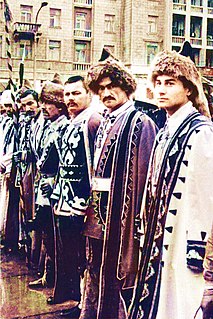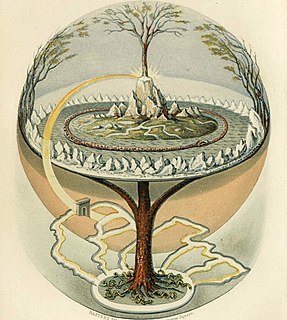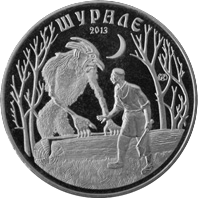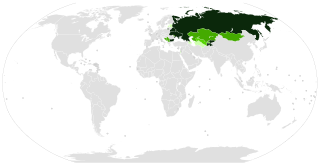
The Tatars is an umbrella term for different Turkic ethnic groups bearing the name "Tatar". Initially, the ethnonym Tatar possibly referred to the Tatar confederation. That confederation was eventually incorporated into the Mongol Empire when Genghis Khan unified the various steppe tribes. Historically, the term Tatars was applied to anyone originating from the vast Northern and Central Asian landmass then known as Tartary, a term which was also conflated with the Mongol Empire itself. More recently, however, the term has come to refer more narrowly to related ethnic groups who refer to themselves as Tatars or who speak languages that are commonly referred to as Tatar.

Novosibirsk Oblast is a federal subject of Russia located in southwestern Siberia. Its administrative and economic center is the city of Novosibirsk. The population was 2,788,849 as of the 2018 Census.

The Bashkirs are a Kipchak Turkic ethnic group, indigenous to Russia. They are concentrated in Bashkortostan, a republic of the Russian Federation and in the broader historical region of Badzhgard, which spans both sides of the Ural Mountains, where Eastern Europe meets North Asia. Smaller communities of Bashkirs also live in the Republic of Tatarstan, the oblasts of Perm Krai, Chelyabinsk, Orenburg, Tyumen, Sverdlovsk and Kurgan and other regions in Russia; sizable minorities exist in Kazakhstan and Uzbekistan.

The Khanate of Sibir was a Tatar Khanate located in southwestern Siberia with a Turco-Mongol ruling class. Throughout its history, members of the Shaybanid and Taibugid dynasties often contested the rulership over the Khanate between each other; both of these competing tribes were direct patrilineal descendants of Genghis Khan through his eldest son Jochi and Jochi's fifth son Shayban (Shiban). The area of the Khanate had once formed an integral part of the Mongol Empire, and later came under the control of the White Horde and the Golden Horde of 1242–1502.

The Tatar language is a Turkic language spoken by Tatars mainly located in modern Tatarstan, as well as Siberia. It should not be confused with Crimean Tatar or Siberian Tatar, which are closely related but belong to different subgroups of the Kipchak languages.

The early history of Siberia was greatly influenced by the sophisticated nomadic civilizations of the Scythians (Pazyryk) on the west of the Ural Mountains and Xiongnu (Noin-Ula) on the east of the Urals, both flourishing before the Christian era. The steppes of Siberia were occupied by a succession of nomadic peoples, including the Khitan people, various Turkic peoples, and the Mongol Empire. In the Late Middle Ages, Tibetan Buddhism spread into the areas south of Lake Baikal.

In mythology, folklore and speculative fiction, shapeshifting is the ability to physically transform oneself through an inherently superhuman ability, divine intervention, demonic manipulation, sorcery, spells or having inherited the ability. The idea of shapeshifting is in the oldest forms of totemism and shamanism, as well as the oldest existent literature and epic poems such as the Epic of Gilgamesh and the Iliad. The concept remains a common literary device in modern fantasy, children's literature and popular culture.

The world tree is a motif present in several religions and mythologies, particularly Indo-European religions, Siberian religions, and Native American religions. The world tree is represented as a colossal tree which supports the heavens, thereby connecting the heavens, the terrestrial world, and, through its roots, the underworld. It may also be strongly connected to the motif of the tree of life, but it is the source of wisdom of the ages.

The Crimean Khanate, officially the Great Horde and Desht-i Kipchak and in old European historiography and geography known as Little Tartary, was a Crimean Tatar state existing from 1441 to 1783, the longest-lived of the Turkic khanates that succeeded the empire of the Golden Horde. Established by Hacı I Giray in 1441, it was regarded as the direct heir to the Golden Horde and to Desht-i-Kipchak.

Shurale is a forest spirit in Tatar and Bashkir mythology. According to legends, Şüräle lives in forests. He has long fingers, a horn on its forehead, and a woolly body. He lures victims to a thicket and can tickle them to death.
Äbädä is an innocent forest spirit in Tatar mythology. It looks like an old woman. Äbädä also is represented in mythologies of Siberian peoples.

Turkic mythology contains myths and legends told by the Turkic people. It features Tengrist and Shamanist strata of belief along with many other social and cultural constructs related to the nomadic and warrior way of life of Turkic and Mongol peoples in ancient times. Turkic mythology shares numerous points in common with Mongol mythology. Turkic mythology has also been influenced by other local Asiatic and Eurasian mythologies. For example, in Tatar mythology elements of Finnic and Indo-European mythologies co-exist. Beings from Tatar mythology include Äbädä, Alara, Şüräle, Şekä, Pitsen, Tulpar, and Zilant.

Numerous Cyrillic alphabets are based on the Cyrillic script. The early Cyrillic alphabet was developed in the 9th century AD and replaced the earlier Glagolitic script developed by the Byzantine theologians Cyril and Methodius. It is the basis of alphabets used in various languages, past and present, Slavic origin, and non-Slavic languages influenced by Russian. As of 2011, around 252 million people in Eurasia use it as the official alphabet for their national languages. About half of them are in Russia. Cyrillic is one of the most-used writing systems in the world.
The Baraba are a sub-group of Siberian Tatars and the indigenous people of the Ob-Irtysh interfluve. After a strenuous resistance to Russian conquest and much suffering at a later period from Kyrgyz and Kalmyk raids, they now live by agriculture — either in separate villages or along with Russians. Some of them still speak Baraba dialect of Siberian Tatar language. They traditionally live on the Baraba steppe.

Baltasinsky District is a territorial administrative unit and municipality of the Republic of Tatarstan within the Russian Federation. The district is located in the north of the republic and occupies an area of 1,094.5 square kilometers (422.6 sq mi). According to the 2010 census, the municipality had a population of 33,879 people. Its administrative center — an urban-type settlement of Baltasi — accounts for 22.8% of the district's total population.

Ishimsky District is an administrative district (raion), one of the twenty-two in Tyumen Oblast, Russia. Within the framework of municipal divisions, it is incorporated as Ishimsky Municipal District. It is located in the south of the oblast. The area of the district is 5,500 square kilometers (2,100 sq mi). Its administrative center is the town of Ishim. Population: 31,085 ; 34,693 (2002 Census); 35,063 (1989 Census).
Archura is a shapeshifting woodland spirit in Turkic mythology who protects wild animals and forests.

Siberian Tatar language is a Turkic language spoken in Western Siberia region of Russia, primarily in the oblasts of Tyumen, Novosibirsk, Omsk but also in Tomsk and Kemerovo.

The Mistress of the Copper Mountain, also known as The Malachite Maid, is a legendary creature from Slavic mythology and a Russian fairy tale character, the mountain spirit from the legends of the Ural miners and the Mistress of the Ural Mountains of Russia. In the national folktales and legends, she is depicted as an extremely beautiful green-eyed young woman in a malachite gown or as a lizard with a crown. She has been viewed as the patroness of miners, the protector and owner of hidden underground riches, the one who can either permit or prevent the mining of stones and metals in certain places.